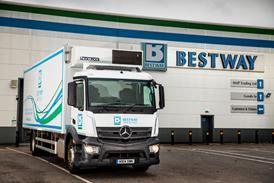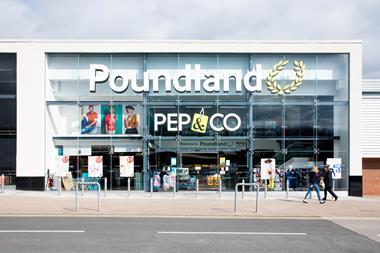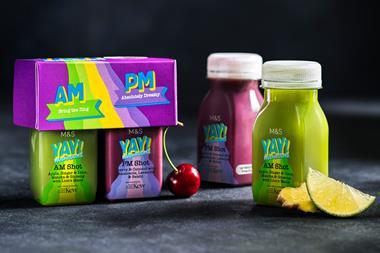
Earlier this year, Amazon introduced its “expert shopping assistant” Rufus to improve its shopping experience. Although the grocery sector has not yet embraced generative AI to the same level, this could – and should – be a harbinger of things to come.
What this technology potentially provides is the ability to take groceries away from the traditional market trader, high street greengrocer-type attitude to sales, which we see even in modern supermarkets, towards a more evolved and sophisticated shopping experience.
This is not about building ‘chatbots’, however. Generative AI has meant we have moved beyond the traditional logic-based chatbots, meaning the term has become dated. Instead, this is about creating genuine conversational commerce. And then, beyond that, all chat will disappear entirely.
The Rufus approach
Rufus is trained on Amazon’s entire product catalogue, as well as information from across the web. It can even access customer data, such as order history, to incorporate into its answers and make them personal.
Rufus is also integrated into multiple touchpoints. For example, it can help guide the start of a customer journey, or help with a specific product on the details page.
So, just like Rufus is available at multiple touchpoints in the Amazon app, grocery retailers could provide conversational interactions throughout the customer journey. And this journey often starts with the search bar.
Customers could enter a simple search, such as ‘bananas’, or they could enter something more complex such as ‘please help me organise an Olympics-themed BBQ’.
And of course, if you ask it to help you ‘organise a Frozen-themed party for my daughter’s fifth birthday’ then the outputs are going to be very different – with kid-based products being shown rather than, for example, alcohol.
Instead of providing a simple list of search results, the generated output could combine text commentary on why the suggestions are relevant, alongside options for different types of sausages, buns, paper plates, drinks, bunting, party bags and so on.
Grouping related products sensibly allows the customer to make their own decisions, with the assistant’s help, while ensuring they don’t miss any of the important categories. After all, nobody wants to end up with all paper cups and no Pepsi.
Being smart about it
Adding a conversational element to a list of search results gives the customer a smarter way of filtering and narrowing down the products they want. Conversational interactions on product detail pages also provide a quick way of asking about a specific product.
Of course, it’s important to note that generative AI is a platform – and a conversation is only one way to interact with that platform. Generative AI can be abstracted in other ways: for example, in making ‘next action’ recommendations, such as noting, ‘other customers who added lettuce to their basket went on to add cucumbers and tomatoes next’.
AI enables grocery brands to be much smarter in the way they offer those recommendations. They can intelligently predict what a customer is most likely to add to their basket next, based on aggregated data from millions of customers, combined with the individual customer’s shopping habits.
Predicting the future
This is because generative AI is predictive. In terms of text generation, it predicts the next word. In terms of image generation, it predicts each pixel. This is its power, and really its only power: it is incredibly good at predicting things.
Grocery brands and retailers should use this power to their advantage to predict the customer’s next move, whether that’s when they’re most likely to book a delivery slot, or what product they’re most likely to add to their basket next.
If a business can forecast these moments with sufficient accuracy, they can start filling customer orders without the customer’s input. It seems scary at first, but I think customers would quickly warm to the idea.
My local supermarket already knows what I buy on a weekly basis, how long certain products last, how often they need to be replaced, my dietary preferences and when I prefer deliveries.
Providing an interactive, conversational layer on top of this knowledge will allow it to make sensible decisions on my behalf, e.g. accounting for upcoming holiday vacations or important events such as religious festivals.
This is where grocery is going. Rufus works well for a shopping experience like Amazon, where purchases are ad hoc and sporadic. However, in grocery, where purchases are repeated at regular intervals, the ultimate goal should be to remove the conversation entirely.
Then my supermarket can offer me an assistant that is so intelligent I can trust it to do the shopping on my behalf. The failsafe would be that I can reject items on the doorstep, just like I can reject substitutes today – and the best-case scenario is that it’s all done without me lifting a finger.



















No comments yet